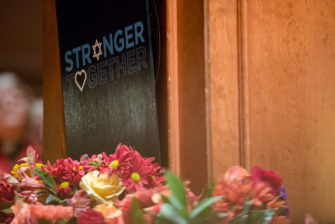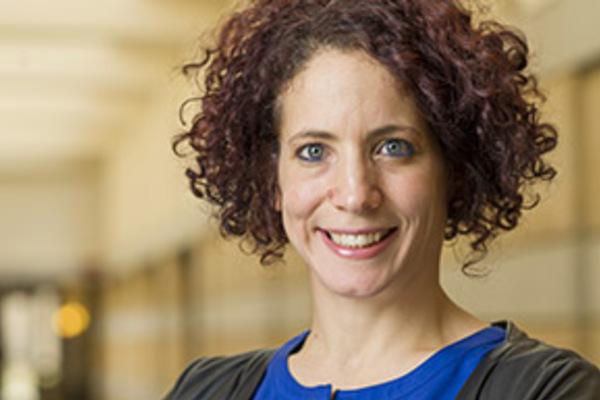
On Shabbat service in Tree of Life Synagogue on an autumn day in Pittsburgh, 2018, 11 people were murdered by a white, Christian, racist, antisemitic, middle-aged man. He justified the massacre as a defensive action against infiltration by elements foreign to the boundaries of his “virtuous” community. Populist nationalisms always thrive on the language of authenticity and purity. The latter opens wide doors and paves clear paths to exclusionary and eliminatory practices. The Pittsburgh massacre exposes the complex ways in which religion participates in boundary and border construction.
American nationalism is intrinsically religious by virtue of its Christian content and valences (e.g. “American is a Christian Nation”; National Motto: “In God we Trust”; “America as a New Israel”; the vocation of American Exceptionalism). In its contemporary manifestation, it is “Christian” by virtue of appeals to a Christian ethnicity which is predominantly white. It is a communal demarcation, regardless of actual degrees of religious literacy and practice. Analytically interpreting questions pertaining to religion and modernity always requires us also to examine race, gender, and other classificatory mechanisms associated with matrices of control and domination as they transmogrify over time and in different locations.
The horrors of Tree of Life’s bloody Shabbat illuminated the intersections of racism, xenophobia, and hyper-deregulation of gun laws. These are combined with anti-refugee rhetoric and antisemitic and anti-Muslim dog whistling. The killer in Pittsburgh targeted Tree of Life because of their connection to the Hebrew Immigrant Aid Society, which helps to resettle refugees and asylum seekers from Central America. He perceived this as a threat, one further inflamed by rhetorical fear-mongering from the very top of the U.S. political system and mobilized across radicalized and radicalizing social media platforms. He received this messaging as urgent, and demanding urgent measures.
Two interrelated critical points press themselves to the foreground. First, as a variety of commentators and Jewish public intellectuals underscored, the bloody Shabbat culminated a week filled with hateful acts against Democratic political figures as well as all-too-ordinary targeted attacks against marginalized and racialized communities. The violence exposes the complex interrelation between race, religion, and nationalist discourses—in this particular instance that of Trumpism.
Some interpreters underscored how the construction of Jewish people as whites in America—coupled with what James Baldwin referred to in an earlier era as their “moral choice” to become white—explains the apparent privileging of the lives lost at Tree of Life. They are “grievable.” Their senseless deaths appear heinous rather than routine. They give rise to widespread, shared lament.
Other interpreters emphasized an ever-expanding moral clarity. An increasing number within the American Jewish community experience this clarity when faced with the coalescing of antisemitism and Zionism within the framework of white nationalism. This coalescing is explicit in the admiration of Zionism as a model of the kind of ethnoreligious nationalism the suit-and-tie spokesperson of white nationalism, Richard Spencer, envisions in America. Clearly, there is no room for Jews there.
Such coalescing became clear, to highlight just one example, with the Trump Administration’s invitation to explicitly antisemitic religious leaders as speakers at the relocated American embassy in Jerusalem. The same honored guests are also on record as verbally assaulting Muslims, the LGBTQI communities, and other vulnerable groups. This challenges the Jewish establishment’s position on Israeli policies and Israel’s location as the pivot of American Jewishness. It challenges the Jewish Zionist mythology and redemptive narrative positing Israel as a safe haven and telos of Jewish history. It reveals the historically embedded modalities in which religion participates in constructing communal lines and other boundaries of belonging, non-belonging, and potential alliances.

The coalescing of antisemitism, white nationalism, and Zionism therefore, ironically, exposes how the claimed equivalency between criticisms of Israel and antisemitism facilitated an embrace and/or tolerance of antisemitic Zionists whose rhetoric and mainstreaming in the U.S. during the elections of 2016 quite clearly made Jewish people less safe. Antisemitism comes entangled with anti-Muslim or Islamophobic discourses, and this reality is even clearer in juxtaposition to a discursive effort to manipulate Islamophobia and orientalist underpinnings to authorize support of Israeli policies against Palestinians.
Yet other interpreters stress the grassroots acts of American Muslim solidarity and the profound meanings generated by multiple interfaith vigils in key cities across the U.S. while others revisit the need to engage in cross-learning among potential allies in the social movement against racism of the histories, manifestations, and shapes of antisemitism, classically and in modernity. The Hebrew Immigrant Aid Society, for example, broadened its original scope from Jewish refugees to all refugees decades ago, recognizing Jews’ historical obligation to help others in need as they once were.
These sites of interreligious or intercommunal acts of solidarity from the grassroots lead us to the second point the Shabbat massacre illuminates, and which I have already alluded to throughout this exposition. Any effort to isolate and ghettoize “religion” as faith contained in houses of worship or in other demarcated spaces—including a domesticated discourse of American religious pluralism—glosses over the complex and intersectional dynamics participating in the construction of identities and their imaginings, as well as the potentiality of their reimagining. The moral clarity some Jewish people are now experiencing is born of their realization, captured in the killer’s apparent motives, that their safety is bound up with the treatment of all the other minority groups and marginalized communities. The fate of the 11 of Tree of Life is deeply entangled with the killing of African American shoppers in Kroger earlier that same week in Kentucky. All those deaths result from the construction of communal boundaries through exclusionary and selective appeals to Christian belonging and racial categories. Likewise, the boundary construction exercise that employed race and Islamophobia to consolidate the imagining of Jews as white—which continues to authorize an ethnocentric interpretation of Jewish liberation and geopolitical borders embodied in Israelism—is crumbling. Its crumbling exposes the intricate links between antisemitism and anti-Muslim sentiments and the potential paths for ally-ship and co-resistance that Muslims, Jews, and others can—and must—articulate against racialized and exclusionary national discourses that employ particular interpretations of Christianity to draw boundaries and close borders.
The Shabbat massacre is not only a hate crime. It is also the latest expression of racialized Christian construction of boundaries. It requires that we grapple with the interrelations and intersections of anti-Muslim and anti-Jewish discourses in producing and reproducing white Christian nationalism in the U.S. and in other contexts normally referred to as the “modern west.” The latter, once again, is revealing its constitutive dark sides.

